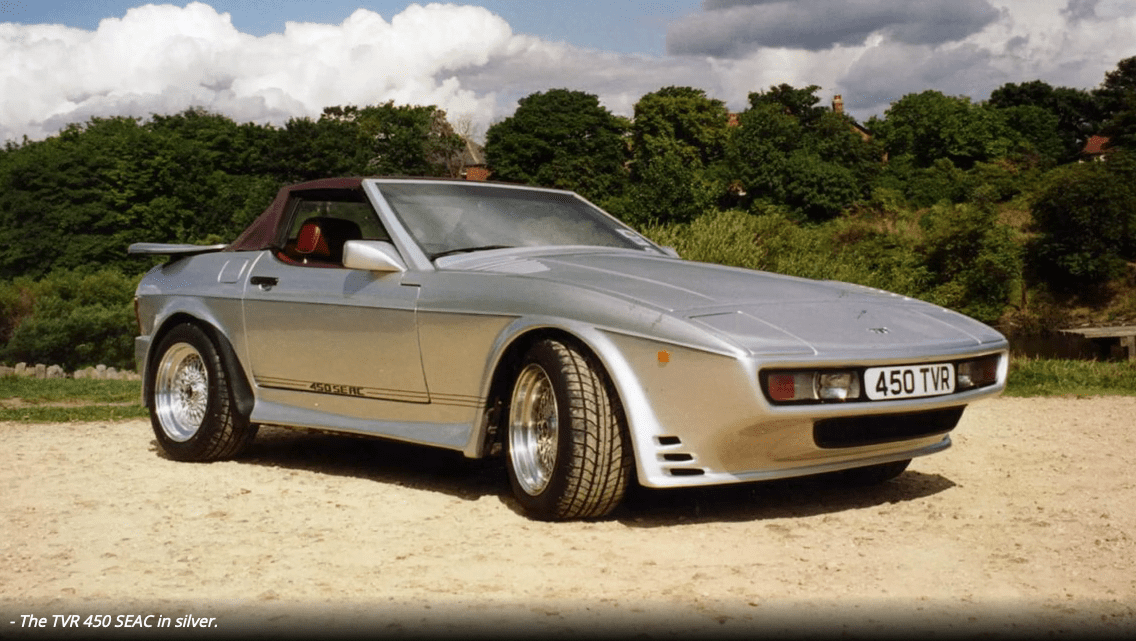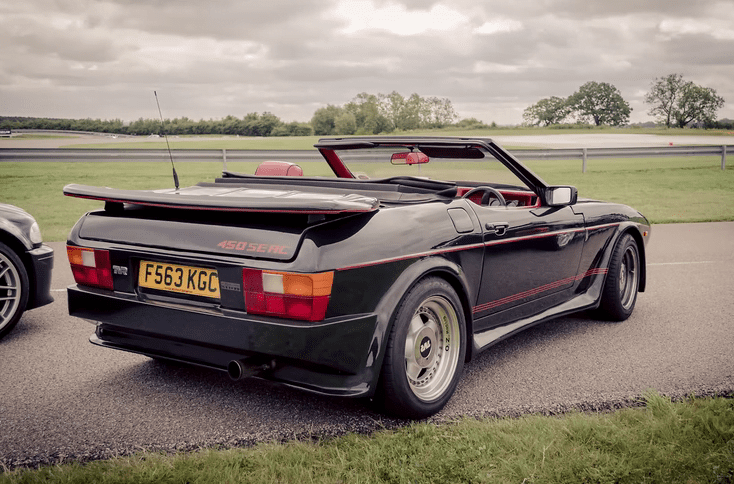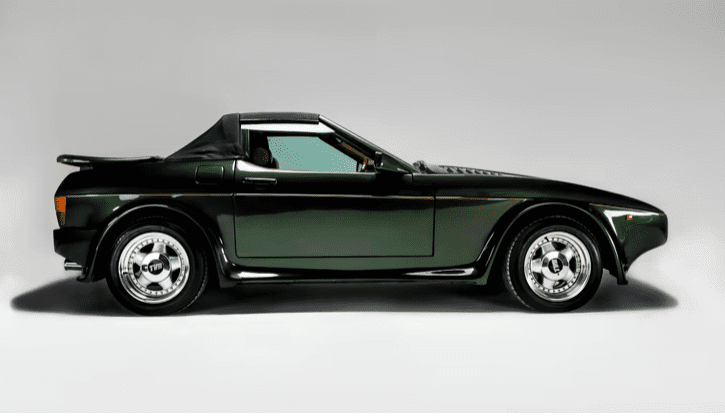The TVR Wedge family is an iconic, indispensable part of the British automotive history and the 450 SEAC turned up the volume to eleven, here’s how.
The TVR Wedges were the series of lightweight, sensational convertible sports cars built by TVR from the 80’s to early 90’s with the nickname ”Wedge” referring to their iconic angular and boxy design language. Their simplistic design didn’t mean that they were basically the same cars, though, as they all housed different engines ranging from four-cylinders to V8’s and different materials used for their bodywork. Today, we’ll be discussing the leader of the Wedge pack, the 450 SEAC.
The rear shot of a 450 SEAC, photo by David Harding.
Originally commissioned by Peter Wheeler as homologation models, The 450 SEAC was built by TVR for just one year, from 1988 to 1989 and only 18 units were built and it was an upgraded version of the already rapid 420 SEAC. The ”SEAC” in the name stands for Special Edition Aramid Composite, referring to the materials used in making the bodywork for the pursuit of lightness which include Aramid composite, a blend of fiberglass and carbon fibre (GRP) reinforced with kevlar, built on a tubular bodyframe. The effect of the materials used for the body has had immense effect on this pursuit of lightness as it weighs as heavy as a feather with its 1131 kg of kerb weight (2493 lbs).
Besides the weight difference between the SEAC and its predecessor wedge models, the overall design of the car was much softer and less edgier compared to the early wedges like the Tasmin or 350i with its curvy side skirts and bumpers, giving it a wide, shark-like look. The 450 SEAC also features a clever convertible layout with a combination of targa roof panels and a softtop. It still retains the pop-up headlights, an iconic feature of the Wedge models. The look of the 450 SEAC is simply perfected with the huge aerofoil rear wing that sits on top of slim struts, providing enough downforce and aero for it to reach its top speed as quick as possible. Want to know how fast it can go? Let’s take a look on the specifications and the capabilities of the 450 SEAC performance-wise.
The 450 SEAC with its softtop on, courtesy of Emily Whelan.
For the 450 SEAC, the 4.2L Rover V8 in the 420 SEAC was further tweaked to squeeze more power, resulting in a bigger, 4.4L Rover V8 that produces 325 HP and 320 lbs/ft of torque (433 nm). The power increase allowed the 450 SEAC to have a 0 to 60 time of just 4.3 seconds and a top speed of 167 mph which made it one of the fastest cars ever built upon its release, so if you’re wondering why TVR gave the car such a huge spoiler, you should wonder no more. The engine is fitted with pistons by Cosworth and tubular manifolds and mated to a 5-speed manual transmission. The V8 in the 450 SEAC has a growly, dirty sound like a death metal singer or a lion, well, what to compare it to is up to you, since the vocal range of this wild beast is as wide as the range of the Rockies.
The 450 SEAC was the perfect machine to end TVR’s wedge car era. It was the final evolution of a decade of boxy sports cars and a last hurrah for the classic design of the brand as TVR gazed into the horizon for the next generation of cars blending power with lightness and brute simplicity like the Griffith and Cerbera. Since the car lacks media compared to other models, you can take a look at this beauty in our gallery below. Enjoy some British car porn!



